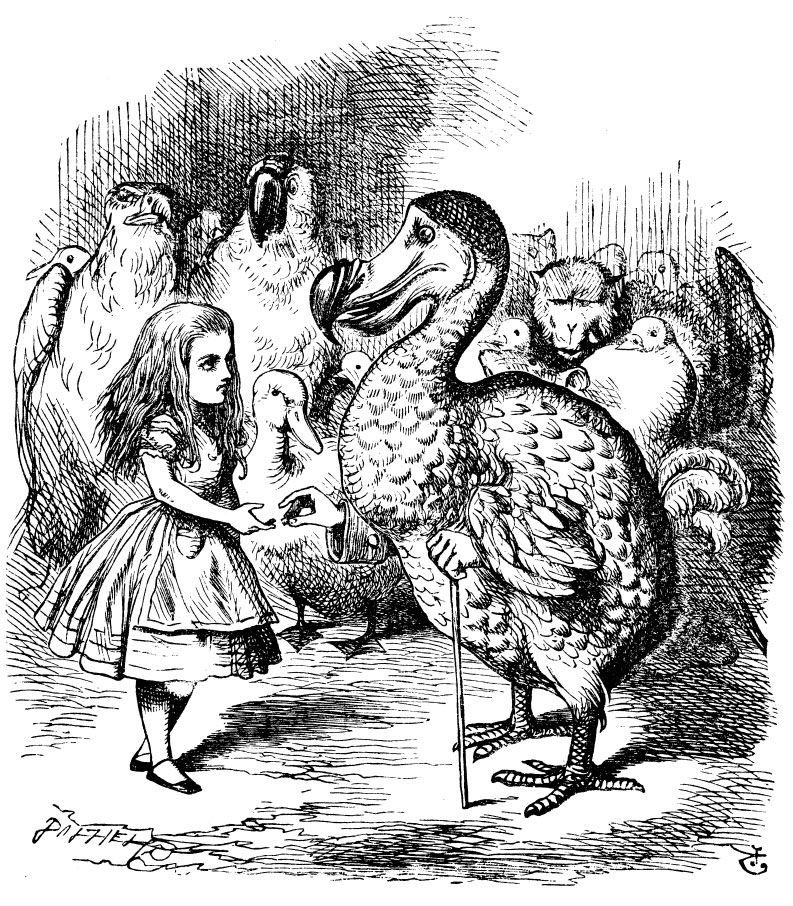Our first day in the Trout Gallery, there was an engraving called Fannie’s Pets with a girl in the middle surrounded by birds, rabbits, frogs and fish. It made me think of the illustration in Alice‘s Adventures in Wonderland after the scene where Alice and all the animals do the caucus race (Carroll 19). I think this illustration is showing Alice handing “round as prizes” the comfits she found in her pocket (Carroll 19); Fannie is also feeding the birds around her which is maybe why it made me think of Alice. Besides Fannie and the animals, there is also a creepy guy watching Fannie from the shadows behind her and a house in the background. Both these made me think of the idea of surveillance in Alice. I think there are two different levels of surveillance; the first is the Queen, and the second is some higher power (maybe the narrator?). The Queen is so quick to behead people that everyone is wary of her seeing/hearing them doing something “wrong”. The cards painting the roses red, for example (Carroll 63) or the scene where the Cheshire Cat asks Alice if she likes the Queen: “‘Not at all,’ said Alice: ‘she’s so extremely–‘ Just then she noticed that the Queen was close behind her, listening: so she went on ‘–likely to win…'” (Carroll 68). There also seems to be some magical god-like presence. At the beginning, when Alice is trying to get through the little door, but she’s too big, and then she leaves the key on the table when she shrinks if feels like something is trying to help her get through the door. She finds the “drink me” bottle “(‘which certainly was not here before,’ said Alice)” (Carroll 5). At some points, it feels like the narrator is the all-powerful being; they know what Alice is thinking at times, but it’s not exactly in third person, because sometimes the narrator addresses the audience, and sometimes they refer to themselves with “I” (“…fancy curtseying as you’re falling through the air! Do you think you could manage it?” [Carroll 3]). It’s hard to tell though if this second surveilling force exists or if it is just dream logic.


Fannie’s Pets (Illman Brothers)/Alice in Wonderland (p19)
https://collections.troutgallery.org/Media/images/1988.21.63_Prim-LoRes.jpg